- September 12, 2022
- No Comment
- 14 minutes read
What Do Military Dogs Do? – Here is Your Answer! – The Soldiers Project
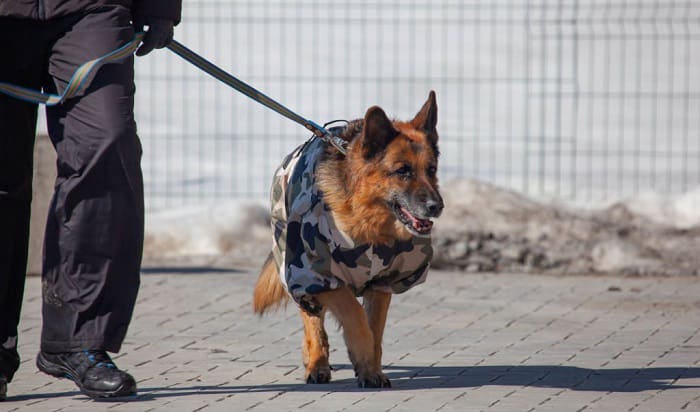
Thesoldiersproject is supported by its audience. When you buy through our links, we may earn an affiliate commission. Learn more
Writen by Everett Bledsoe
Fact checked by Brain Bartell 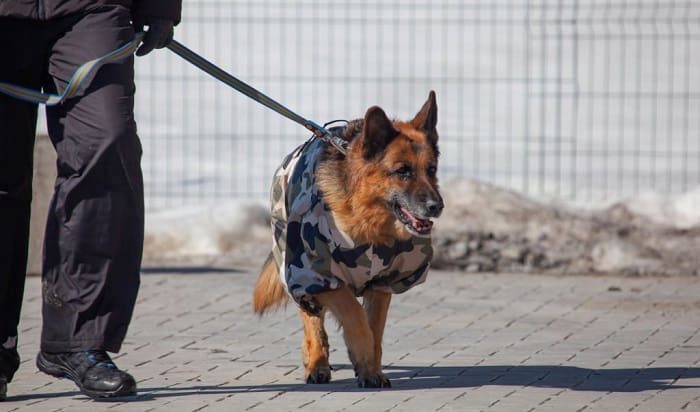
Dogs have long played a role in the military. In ancient times, dogs fulfilled different roles for the Alans, Baganda, Britons, Egyptians, Greeks, Persians, Sarmatians, Slavs, and Romans.
Today, dogs are a part of many Armed Forces, such as Australia, Canada, the U.S, and the U.K. But in this article, we will focus on U.S military dogs. Read until the end to answer, “What do military dogs do?” and find out all about these amazing animals.
Table of Contents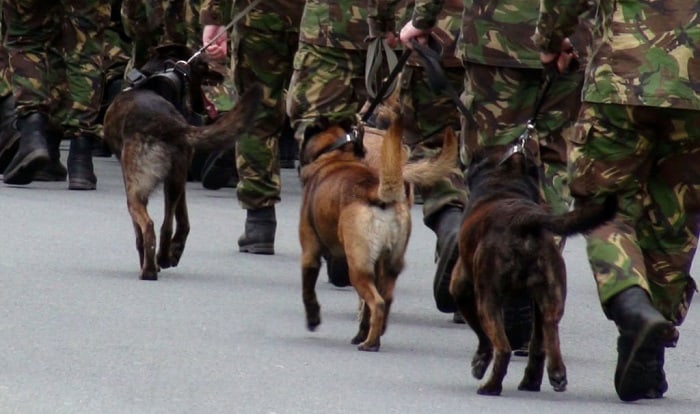
There are currently ~1,600 dogs serving the military. Their missions span across the land, air, and sea!
Military dogs are trained for specific jobs. They may patrol, search and rescue, detect, track, and attack.
In general, military dogs work with their human partners to neutralize threats in operations.
These dogs bark or growl to warn troops of imminent threats. They are especially helpful when visibility is limited, like at nighttime. Sentry dogs are typically present at airports, supply posts, and essential storage facilities as guards.
These dogs silently detect ambushes and snipers. They can be away from their handlers and roam off leash so intelligence and a quiet disposition are two qualities they must possess. Scout or patrol dogs will alert their handlers by twitching their ears or taking a stiffening stance.
These dogs are also referred to as search and rescue dogs. They are trained to sniff out the wounded. They can reach places that troops cannot. They would locate injured people underneath rubbles, for example.
These dogs sniff out explosives. In other words, they detect bombs. They are often seen at checkpoints and traffic stops or inspection stations. Unlike other types of military dogs, they are on a leash and stay close to their handlers while doing tasks.
These dogs are trained to attack upon command. When they catch a suspect, for instance, they would bite the suspect and hold on.
A soldier carrying an attack dog: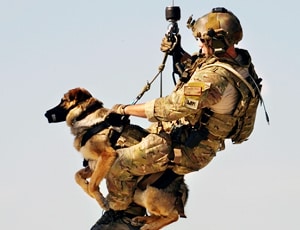
Aside from military dogs trained for security-related jobs, there are service dogs, therapy dogs, and dogs that serve as mascots. These dogs support the troops in other ways.
They perform a variety of specialized tasks like opening doors and detecting seizures to support the DoD community. These dogs are trained to work for long distances off-leash. Among their skills, service dogs are able to comprehend hand signals and radio commands.
They provide comfort and affection to people in clinical settings.
They serve as an emblem for a service branch or several service units and fulfill ceremonial purposes. For example, the Marine Corps official mascot is an English bulldog named Chesty. Marine units throughout the Corps also have bulldogs as their mascots.
Some four-legged soldiers work exclusively for the Army.
Multi-Purpose Canines
There are also dogs that work solely for the Special Forces. They are called “multi-purpose canines.” These dogs serve alongside the Army Rangers and Navy SEALs. They can engage in amphibious operations and jump out of helicopters or from airplanes!
This is another type of dog that serves the military. However, unlike the others, military contract dogs are not owned by the DoD. They are just hired by the military from outside companies to do work for them. So they do not have the same benefits as military-owned dogs, such as access to health care.
Dogs in Combat
World War I
The U.S military unofficially sought help from dogs in World War I but it was not until March 13, 1942, that they were officially recognized. In that year, a private organization called “Dogs for Defense” was founded to recruit dogs from the public for the War Dog Program in the U.S military.
Korean War
Five years after World War I, the Korean War raised the need for military working dogs. They were briefly deployed to combat night patrols and did a splendid job in penetrating enemy lines, ambushing snipers, and sniffing out enemy positions.
Vietnam War
It was estimated that 4,000 to 9,000 military dog handlers took part in the Vietnam War. Dogs scouted, patrolled, detected mines and bobby traps, etc. They were so good at their duties that the Viet Cong had a $40,000 bounty for their capture!
Middle Eastern Wars
Military working dogs continue to serve the military in Iraq and Afghanistan. They were trained to detect drugs and explosives. In addition, they did sentry, therapy, and service work. According to the director for the American K9 (Afghanistan and Mali, West Africa):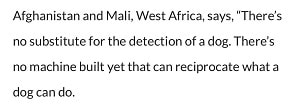
Only 15 percent of military working dogs are born and raised in the United States by the 341st Training Squadron. The remaining 85 percent are actually dogs from specialized breeders overseas, particularly in the Netherlands and Germany.
It takes from $20,000 to $40,000 to train a dog. However, in order to become an “elite” military working dog, training can cost well over $150,000.
Training is intense and selective. As with military recruits, not all dogs make it through training. In fact, only about 50 percent of dogs in the MWD program “enlist.”
Sallie
Sallie was the unit mascot of the 11th Pennsylvania Infantry. She died of a bullet wound on the front line two months before the war’s end. She has stood alongside the unit since puppyhood. Today, there is a statue honoring her at Gettysburg National Military Park.
Stubby
Stubby was a stray that was smuggled to Europe by a 102nd Infantry Regiment soldier in World War I. He learned to salute with his right paw and bugle calls. He also alerted soldiers of gas attacks and captured a German spy. Throughout his career, he served in a total of 17 battles. Stubby is the first dog to receive the Sergeant rank!
Gabe
Gabe served in Iraq, where he sniffed out ammunition, explosives, and other weapons. His record holds 170 combat patrols and 26 finds.
Gabe was named the “Hero Dog of 2012” by the American Humane Organization and donated his $15,000 award to the U.S War Dogs Association!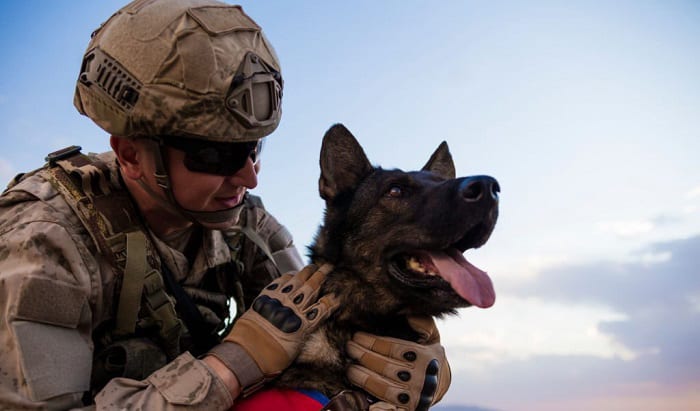
How are military dogs trained?
As pups, these four-legged soldiers train intensively on base. They practice bite work and basic obedience before moving on to learning to recognize commands and detect odors. They will be exposed to various environments and situations and trained on how to respond.
At 1 year old, these dogs are assessed for the Military Working Dog Training Program. Once they pass the Consignment Test, they graduate and enter the Regular military service. The program takes place in San Antonio and lasts for 120 days. It is run by the 341st Training Squadron.
To get a deeper insight, hear from Ben, an Air Force dog based at Travis Air Force base in California talk about a day in his life!
What does the owner of a military do?
Just as their dogs, owners of military dogs train. They are usually called military dog handlers. They train in order to properly take care of and work with military dogs. Military dog handlers must be prepared for combat missions as well as police functions.
To take on this role, one would have to finish:
It is also necessary to be re-certified for the position from time to time.
You can find more details in our article “How to Become a Military Working Dog Handler?”
Do military dogs have a rank?
Yes. There are military dog ranks. Every dog working in the military is a non-commissioned officer. They are additionally always one rank above their handlers. The NCO status is meant to prevent handlers from mistreating or abusing their dogs.
What are the breeds of military dogs?
Military dog breeds are varied. The German Shepherd, Labrador Retriever, and Belgian Malinois are the most common. German Shepherds and Labrador Retrievers typically serve in the Army, while the Belgian Malinois is popular in the Navy.
Meet Lucca, a half German Shepherd military dog: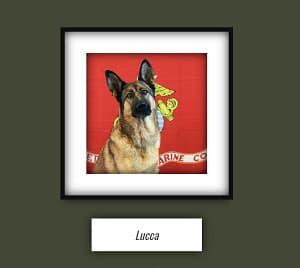
Lucca is now medically retired, but she served for six full years. During her career, Lucca led roughly 400 patrols and detected up to 40 improvised explosive devices.
In 2016, Lucca’s service was recognized and she received the Dickin Medal for animal valor. Fun fact: She is the first military dog honored with this medal!
Do military dogs get paid?
Military dogs do not get paid. But they can earn awards from nonprofit animal organizations and animal welfare groups.
What are military dogs called?
In the past, dogs that served military-related purposes were called military war dogs. Today, they are called military working dogs or military service dogs.
What do military dogs do? As you have read, they can be tasked with patrolling, searching and rescuing, detecting, tracking, and attacking. There are different types of military dogs based on their primary job. Some dogs work exclusively for the Army, others are a part of the Special Forces. There are also dogs that work for the military police, and dogs that are hired from outside of the military. Regardless of the type, these four-legged soldiers have done much and will continue to do so for the country.
I am Everett Bledsoe, taking on the responsibility of content producer for The Soldiers Project. My purpose in this project is to give honest reviews on the gear utilized and tested over time. Of course, you cannot go wrong when checking out our package of information and guide, too, as they come from reliable sources and years of experience.
For defending purposes, American soldiers are equipped with the most advanced and premium-quality gear available. If you want to hold your equipment to such utmost standards, here is the place to start. You can browse through our list of the thoroughly hand-picked series of gear that is military-complaint. And all the essential accessories are reviewed to support long-lasting maintenance. Check us out!
About Contact Privacy Policy Disclaimer
Thesoldiersproject.org is a participant in the Amazon Services LLC Associates Program, an affiliate advertising program designed to provide a means for sites to earn advertising fees by advertising and linking to Amazon.com. Amazon, the Amazon logo, AmazonSupply, and the AmazonSupply logo are trademarks of Amazon.com, Inc. or its affiliates. As an Amazon Associate I earn from qualifying purchases.

